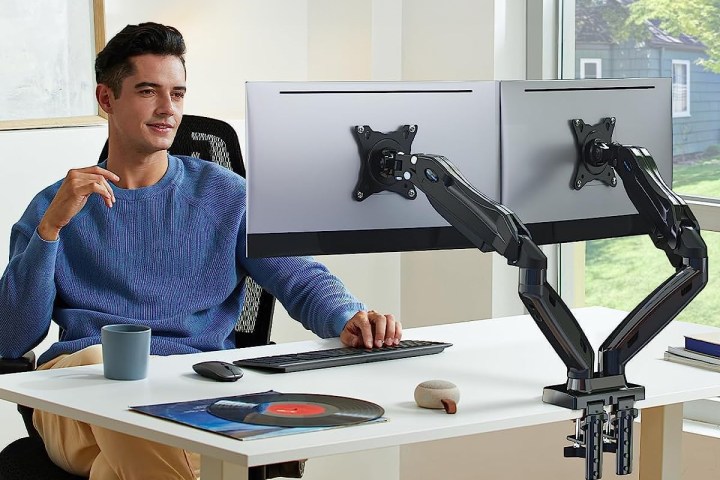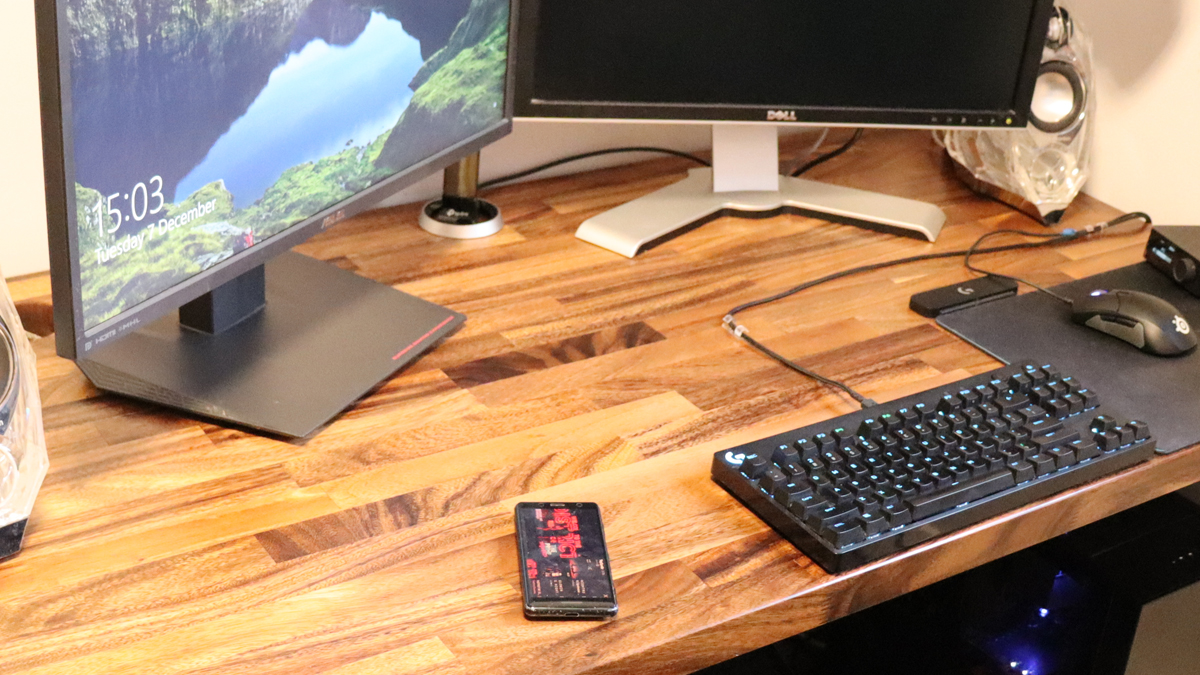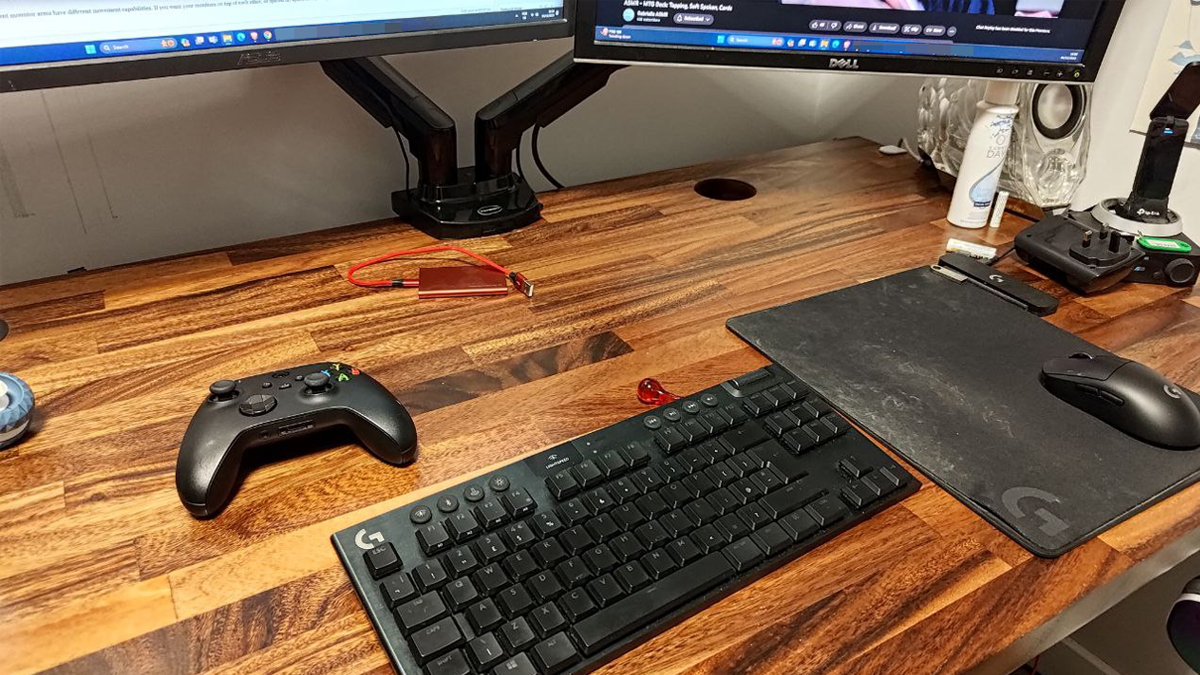
After-market monitor arms are one of those “upgrades” you can perform that I never saw the need for. I mean, I’ve already spent several hundred dollars on a nice monitor for work and gaming, why would I spend another $50 on a stand for it to replace the perfectly good one the screen came with?
It turns out that the answer is because they’re just better. And not in the $1,000-Apple-stand better kind of way. Just that bit better. And when you’re on a quest to reduce back pain in your office, you’ll try just about anything.
So my latest venture was replacing my monitor stands with a third-party solution. And I wish I’d done it years ago.
You can move your monitor exactly where you want
I’m a big fan of multi-monitor setups. They’re great for boosting productivity and for giving you a good look at Discord or a Wiki page while gaming. I love it so much that staff writer Jacob Roach and I even had a the tech-journo equivalent of a fight over whether ultrawides are better. But with the constant churn of new PC hardware through my office, I’m a stickler for making the most out of the hardware I have. I want whatever I’m working with to do just that: work. And that’s meant that I have some serious legacy hardware still in use. Like a 15-year-old monitor.
That 24-inch monitor isn’t just a bit bulky — it also has a chunky stand, with typical 2008-era lack of maneuverability. Combine that with a slightly more mobile Asus MG279Q from a more modern era, and I’ve simply gotten used to them being at mismatched heights and imperfect angles. Well, that’s no longer an issue with a third-party monitor arm. I’ve got them set up almost perfectly in line, and crucially, all at a comfortable height for me to work at, discouraging further slouching or eye strain.
They’re angled more comfortably, too, so everything feels about roughly the same distance from my eyeballs. Finally, I can enjoy something of an emulation of the curved screen wonders of Jacob’s ultrawides. I’m not jealous, honest.
Just look at all that space
With my myopic focus on improving posture and reducing pain, I didn’t even consider how much extra space using a desk clamp monitor arm would free up. While the old Dell’s stand was pretty big, the newer Asus one wasn’t much better. With a desk clamp dual-arm setup, I suddenly have a couple extra square feet of desk space, which makes a massive difference, especially when my desk is getting a bit messy.
Even cable management is easier
When I got my fancy new Uplift desk, I told myself I’d finally route all the cables so they were out of sight and, ideally, out of mind. At the time, with my old monitor stands, that meant a lot of cable ties and double-sided tape tucked round the back of the desk. Over time, though, as the desk has gone up and down and the tape’s tackiness has waned, my tidied cables aren’t quite what they once were.
Switching over to a dual monitor arm made for a great opportunity to fix that and it helped a lot with it, too. The arms have their own built-in cable runners, covering the most important and inelegant portion of the cable run:from monitor back to under the desk. From there, it’s much easier to hide the cables from sight, making for a more negative space-filled office space, which feels like it aids productivity and reduces my ever-present drive to procrastination.
How to buy a monitor arm
Intrigued by my monitor arm journey and want to join me in this new wondrous world of maneuverability? Here are the most important factors to consider when buying a monitor arm:
- Compatibility: Check the VESA mounting system for the arm(s) that are compatible with your monitor(s). It’s no good buying an arm if it doesn’t fit your display.
- Check the weight: Make sure the new monitor arm(s) can handle the weight of your monitor(s). You can probably go over a bit — I have done by a kilo — but it’s probably best to stay within the rated weight tolerances.
- Pick the mount style: Some arms mount on the wall, some clamp to your desk, and some are designed to drill straight through them. I could have done that with mine for additional strength, but if you think I’m taking a drill bit to that walnut butcher block, you’ve got another thing coming.
- Make sure they can do what you want: Different monitor arms have different movement capabilities. If you want your monitors on top of each other, or spaced far apart, or anything beyond the absolute basic side by side mounting, make sure your chosen mount can do it.
Editors’ Recommendations






